Running a company, especially one with a fully digital infrastructure, poses numerous challenges. As of 2023, 12.7% of employees are working remotely, and 28.2% are embracing hybrid models, signifying the need for effective communication models for businesses. From navigating day-to-day operations to coordinating schedules across time zones, effective communication lies at the heart of success.
This signifies the need for establishing a robust remote communication network in your organization. To thrive in this landscape, it’s crucial to establish a robust remote communication system. Here is a detailed guide to streamline your operations and empower your business through remote communication.
It is essential for organizations to ensure streamlined remote communication strategies to foster team collaboration and increase productivity. Make sure to create the right infrastructure for remote communication and establish clear guidelines to enhance performance and employee engagement.
What is Remote Communication?
Remote communication refers to the exchange of information, ideas, and messages between individuals or groups who are not physically present in the same location. It typically involves the use of various digital tools such as email, video conferencing, instant messaging, and collaboration platforms to facilitate effective interaction and collaboration over distances. Tools like project management software, team chat apps, and virtual whiteboards also play a crucial role in keeping remote teams organized and connected.
Why is Remote Communication Important?
Whether you’re remote-first or remote-friendly, effective – or non-effective – communication can make or break your company.
Communication is something you might take for granted when you and your team are all present in the same office. However, without in-person communication and that face-to-face element, you and your team must rely on remote communication tools to make sure that everyone is on the same page.
1. Project goals
Effective communication is extremely important when you’re working hard toward achieving project goals, deadlines, and key performance indicators (KPIs). Without the right communication channels, your collaborative work can become disjointed, leading to not only misunderstandings within the team but also delivery delays and unhappy clients.
2. Client communication
Speaking of clients – having the right client communication tools also makes a world of difference when it comes to communicating with clients. Using these tools, you can keep your clients up to date with what’s happening with their projects and immediately address any feedback or concerns.When communicating with customers via email, pay close attention to your email deliverability. Regular spam testing helps ensure your important messages land in the inbox instead of being filtered to spam or blocked.
3. Employee engagement
Good remote communication is a perk for clients and employees. Remote working can often feel isolating and lonely, and team members may feel disconnected. Therefore, having the right remote channels set up can help employees feel connected to their colleagues, foster a sense of belonging, as well as help create a unique company culture that keeps employees motivated.
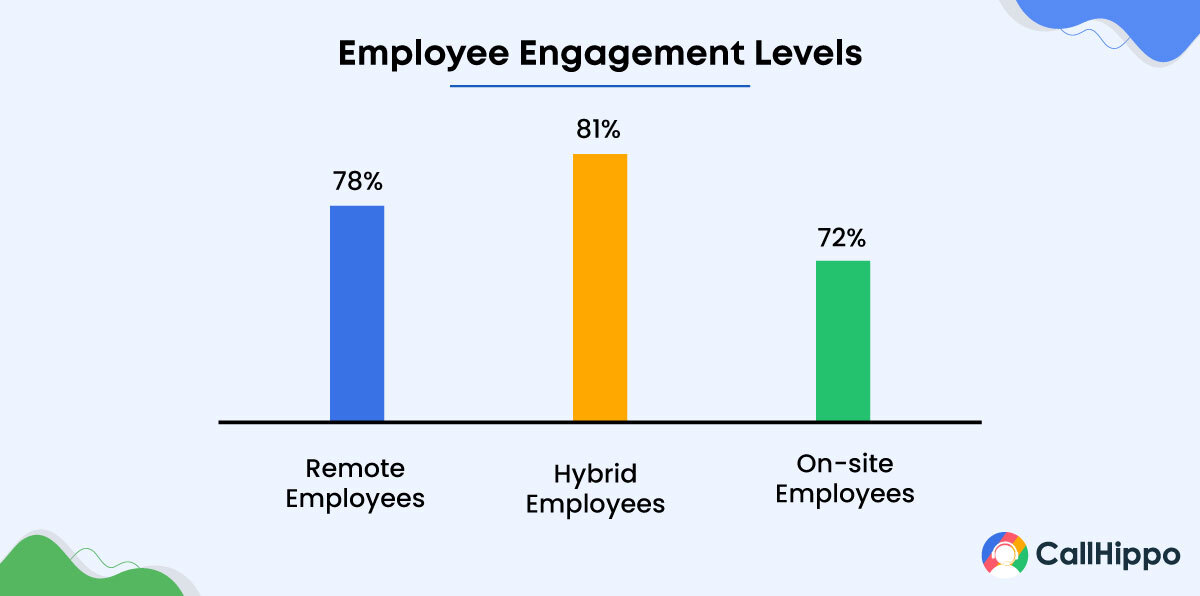
How Can You Promote Security In A Remote Environment?
Online security should be a key priority and concern for both remote-friendly and remote-first agencies. A VPN for TV can help remote teams securely access region-locked training videos or internal streams. After all, you don’t want sensitive data accidentally shared publicly, as that can essentially ruin your company’s reputation.
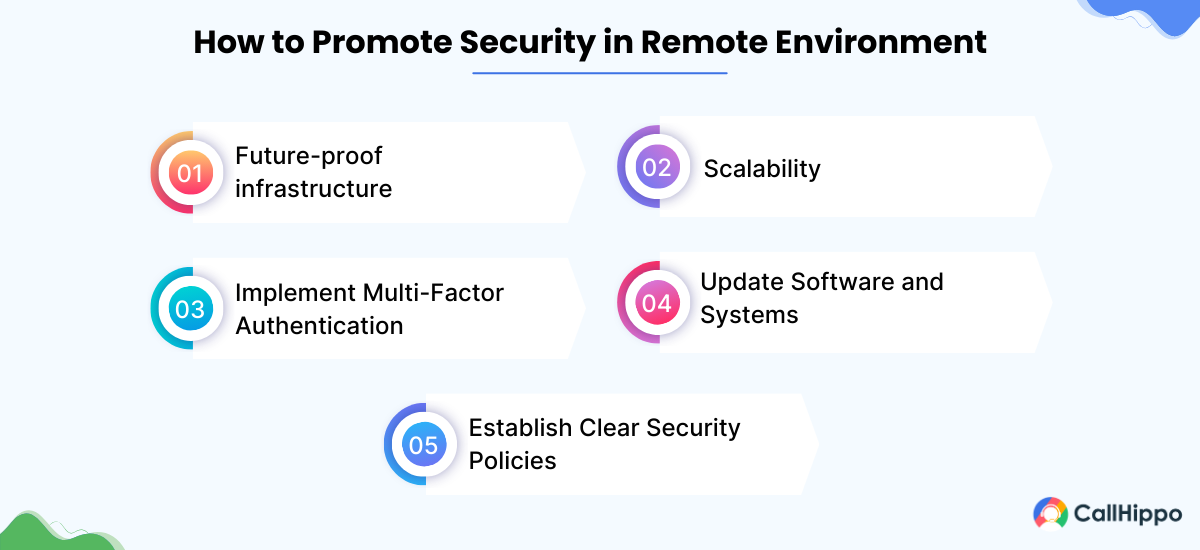
1. Future-proof infrastructure
Choosing a high-quality managed cloud hosting provider is a crucial step toward building a future-ready communication system. It ensures your data is stored, monitored, and backed up in secure environments. It’s not only essential if you are concerned with protecting sensitive data internally, but also to prevent malicious third parties from accessing company data.
2. Scalability
Another pro is that it enables you to scale your communication infrastructure accordingly while still maintaining the same speeds. So, whether you’re experiencing spikes in workload or are in a position to recruit more employees, it offers the flexibility to adapt to your current needs on demand.
3. Implement Multi-Factor Authentication
Multi-factor authentication (MFA) enhances security by requiring users to verify their identity through multiple authentication methods. Typically, this involves providing something the user knows (like a password), something they have (like a smartphone or token), or something they are (like a fingerprint or facial recognition), adding layers of protection against unauthorized access.
4. Update Software and Systems
Regularly updating software and systems involves installing the latest patches, upgrades, and security fixes provided by software vendors. This helps mitigate vulnerabilities and ensures that systems are protected against emerging threats.
5. Establish Clear Security Policies
Establishing clear security policies involves defining rules and guidelines for handling sensitive information, accessing company resources, and using remote devices. This ensures consistency and compliance with security protocols across the organization.
How To Choose The Right Remote Communication Tools?
The right virtual remote communication and collaboration tools can transform the way you and your team work, so choose wisely.
Whether you’re in the market for video conferencing or project management tools, it’s important to consider certain elements before making your decision.
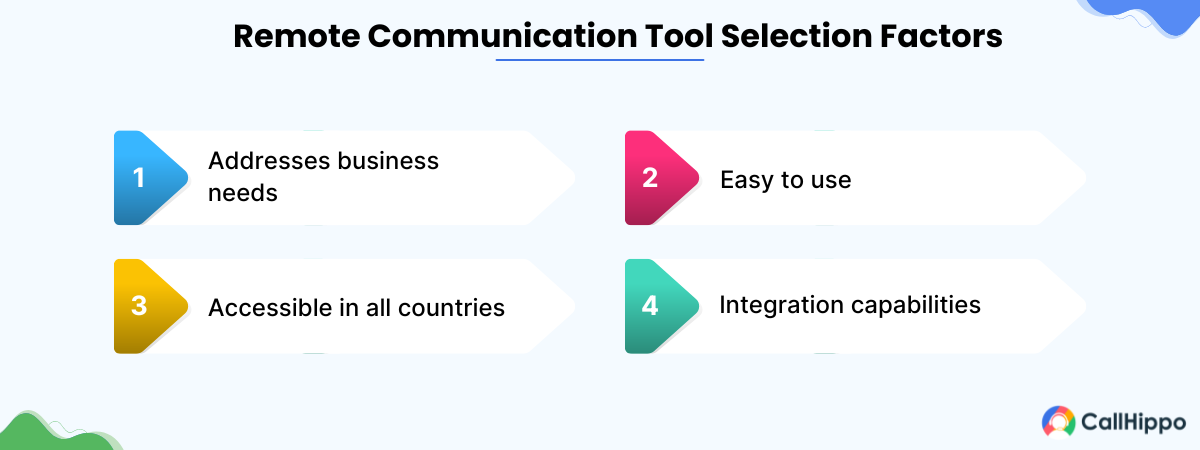
1. Addresses business needs
First, make sure that the tool you’re opting for addresses your company’s specific needs. Consider your business size, type of work, and client requirements, and make sure that the tool you’re considering ticks all your boxes in terms of features and functionalities.
2. Easy to use
You also need to make sure the tool you choose is easy to use. This includes factors such as navigation, device accessibility, and user interface design.
Not everyone on your team is a tech head, so you need to ensure that all team members can use the digital tools without having any major issues.
3. Accessible in all countries
If you run a remote-first company with team members working in different countries, you need to choose a tool that’s accessible in all the countries they happen to be in. It’s no use investing in communication tools if half of the members of your team can’t access it!
4. Integration capabilities
Look for tools that can be integrated into your existing digital tool suite. This includes various project management tools like CRMs, email clients, email marketing software, document collaboration tools, and so on.
By checking each potential tool’s integration capability, you can be sure that you invest your money into something that can work seamlessly with the tools your employees are already familiar with and are already using.
How To Establish Clear Communication Channels?
Having clearly defined communication channels might sound like a no-brainer. However, it’s a common trap that you can easily fall into if you’re not careful.
Make sure you clearly define the purpose of each communication channel, the information that should be shared via that channel, and where urgent information or messages should go. Here are some practices to establish clear communication channels:
1. Choose synchronous communication vs asynchronous communication
When considering whether you’re employing a synchronous (remote workers can respond when it’s best for them) or remote asynchronous communication (real-time) style between your team members, it’s worth asking yourself the following two questions:
- Are your employees working 9-to-5?
- In which time zones?
This dictates the time-related expectations of you and the rest of your team regarding effective work and communication.
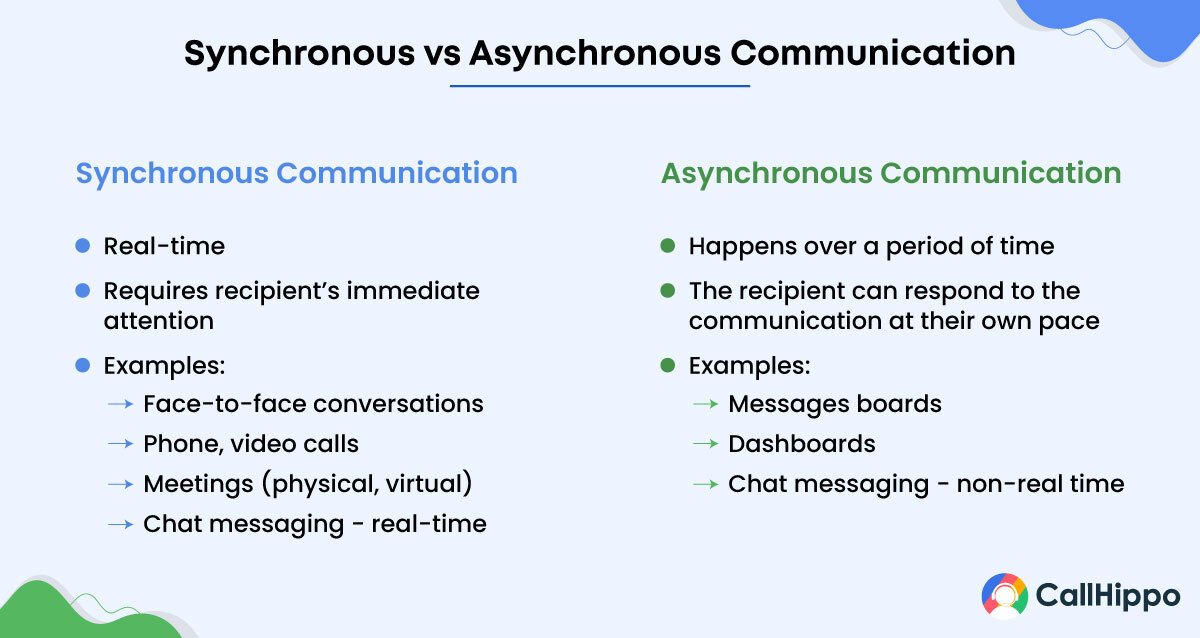
2. Establish clear remote team communication guidelines
Establishing guidelines for effective communication while working remotely, such as message formatting and scheduled meeting times, is important to ensure that your business runs smoothly. Make sure that all team members are aware of these guidelines to maintain a certain level of consistency across the board.
3. Regular one-on-one check-ins with remote teams
Whether you’re a remote-first or remote-friendly company, one-on-one check-ins with remote employers should be enshrined in your company’s modus operandi.
They not only provide remote employees with the opportunity to discuss their work but also encourage them to exchange ideas and ask for additional support in a more private setting.
4. Set frequency and format of meetings with remote workers
Make sure to schedule these meetings well beforehand, at a time that works best for both you and the employee. This helps put your employees at ease and creates a healthier environment for in-depth discussions.
Additionally, conduct these check-ins via video call – or, if that’s not possible, a phone call – to create a more personal connection with your employee.
5. Have an agenda in place
Setting an agenda before the meeting makes a big difference in ensuring that there’s some sort of structure to the meeting. Make sure to ask the employee well before the meeting to provide some key topics they want to discuss. This way, both of you can rest assured that all the important topics will be covered. Companies usually invest in robust project management tools for this purpose.
How To Promote A Remote Work Culture?
A remote-first company doesn’t mean having no sense of company culture. On the contrary, curating a distinct culture for your company is crucial to motivating current employees and attracting and recruiting the top talent in your field.
1. Embrace the flexibility
Remote work is especially appealing for a certain kind of employee, so embrace it as part of your company culture. Encourage a culture of trust by allowing employees to adjust their own schedules and workspace setup.
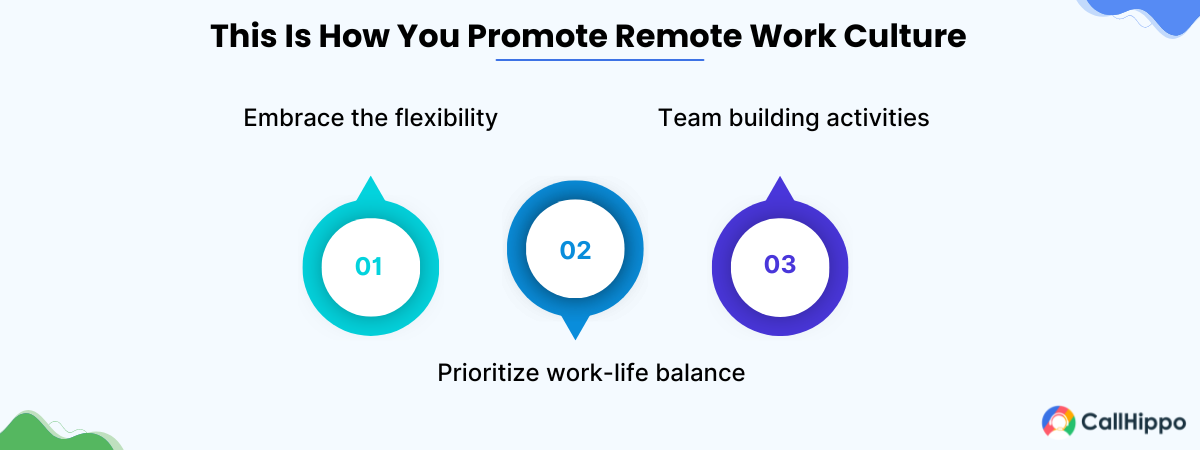
Sweeten the deal by covering equipment and co-working space costs. All this ensures that your employees feel empowered and not burdened by work, in turn boosting productivity.
2. Prioritize work-life balance
According to the Int J Environ Res Public Health study, remote workers experience higher levels of happiness and self-actualization when compared to their office-based counterparts.
A better work-life balance is one of the main reasons that encourage people to work remotely. Therefore, make sure that you lead by example and that you set clear boundaries between work and your personal life.
Establish clear routines and communication hours organization-wide, encourage regular breaks, and respect employees’ time off.
3. Team building activities
Whether that’s virtual team-building activities or flying everyone out to a specific location once a year, organizing team-building activities is crucial for your company’s success.
These activities offer your remote team members the opportunity to connect with the people they work with daily and foster bonds and relationships outside of work-related tasks.
Conclusion
In the fast-paced world of business, prioritizing remote communication may seem like a waste of time. However, communication is and should be the cornerstone of every business, especially remote businesses.
Robust remote communication is about more than just meeting deadlines and wrapping up projects, however. It’s about taking care of all the people involved and making sure you’re supporting them every step of the way.
By implementing a clear communication strategy from the outset, you ensure that everyone involved, whether clients or employees, feels heard and motivated by your company’s work and mission. Only then can your business truly thrive!
Don’t Miss To Read: Remote Phone Systems: A Complete Guide
FAQs
1. What are the two types of remote communication methods?
In remote work, there are primarily two types of communication: synchronous and asynchronous. Synchronous communication happens in real-time, like video calls or instant messaging. Asynchronous communication occurs when there’s a delay in response, such as emails or leaving messages on collaboration platforms.
2. What kind of communication is extremely limited in remote work?
Casual or spontaneous communication is often extremely limited in remote work. These impromptu conversations, like water-cooler chats or brief hallway discussions, are less common in remote settings where interactions are more structured and deliberate.

Subscribe to our newsletter & never miss our latest news and promotions.









